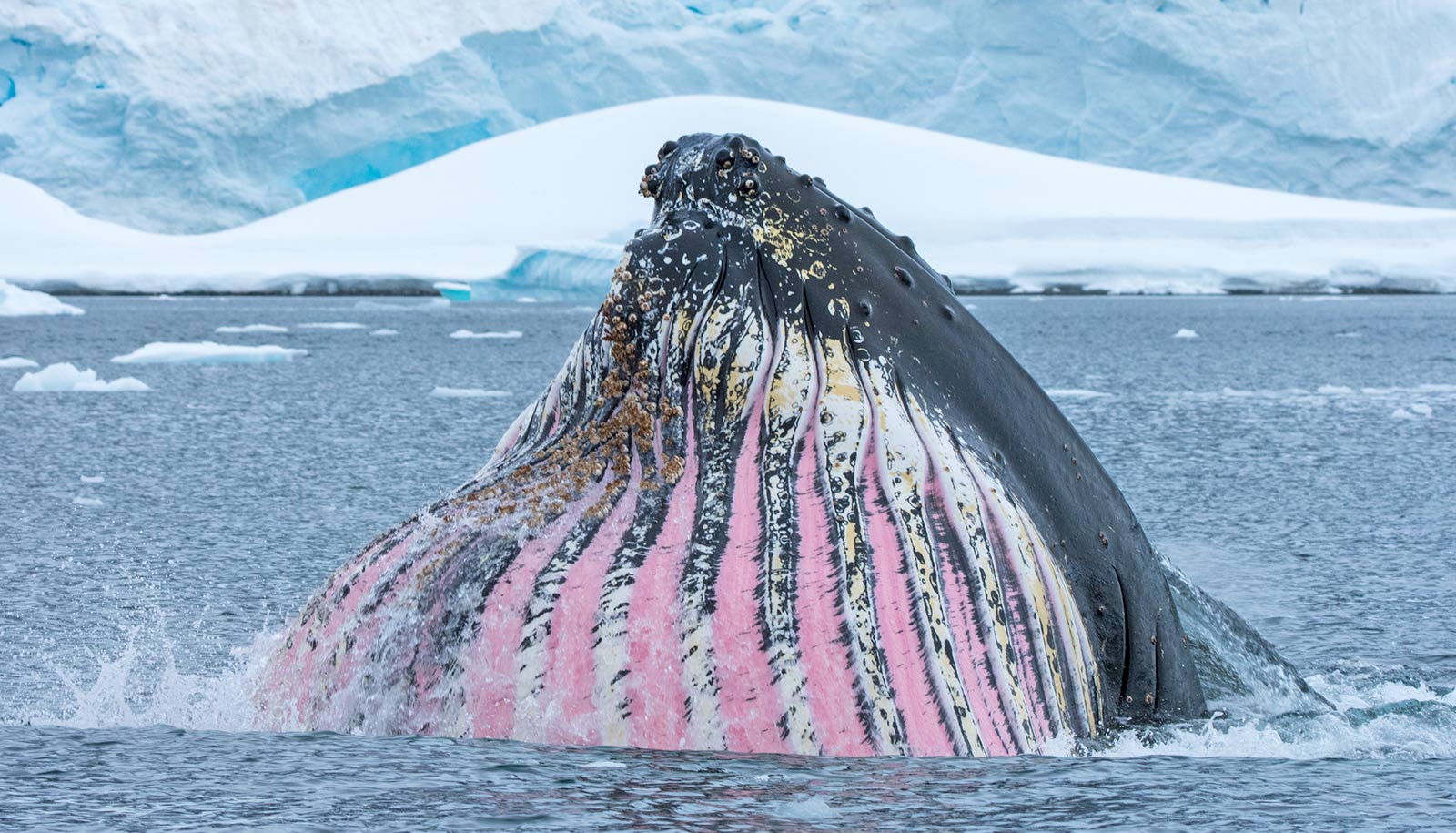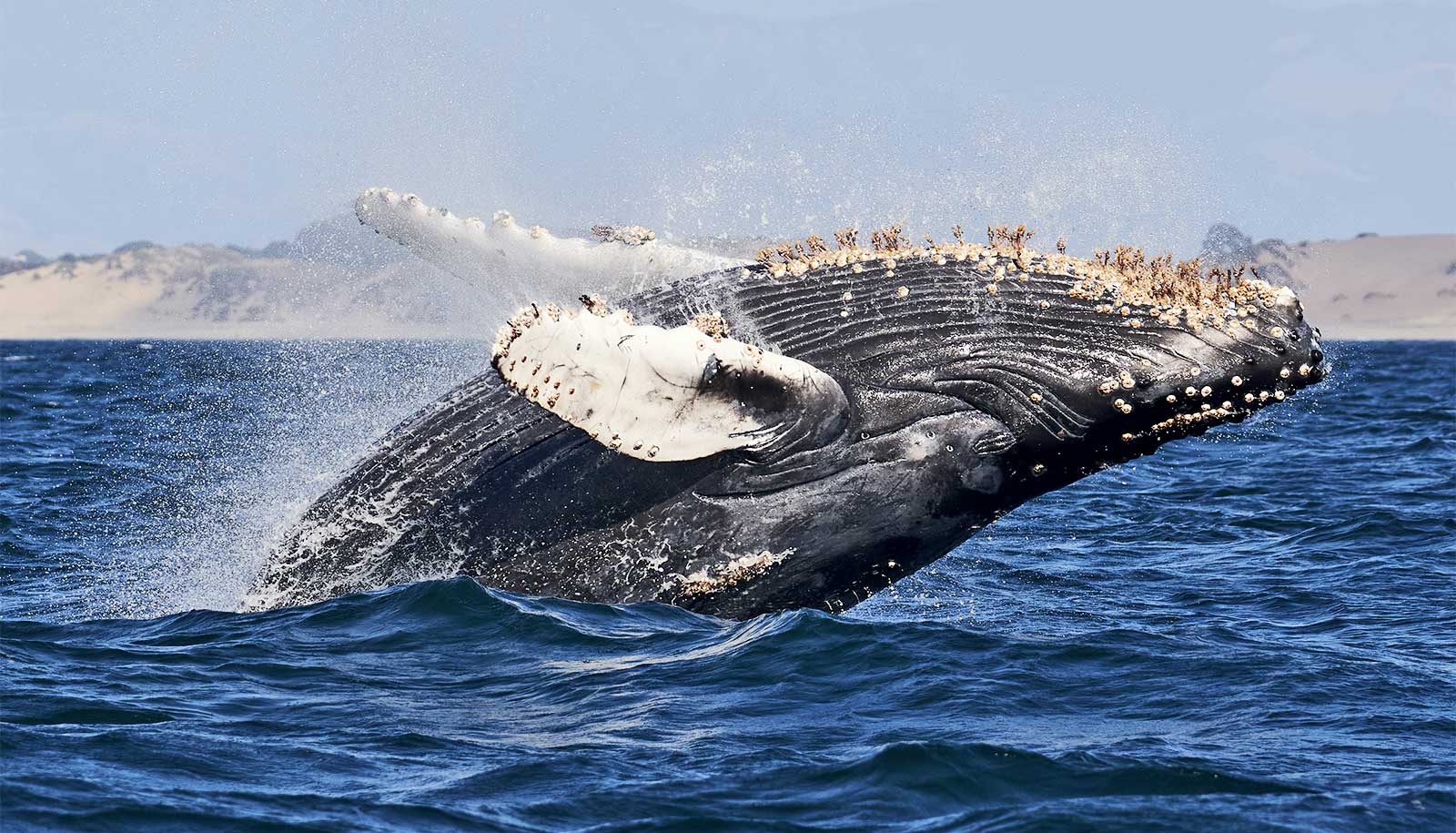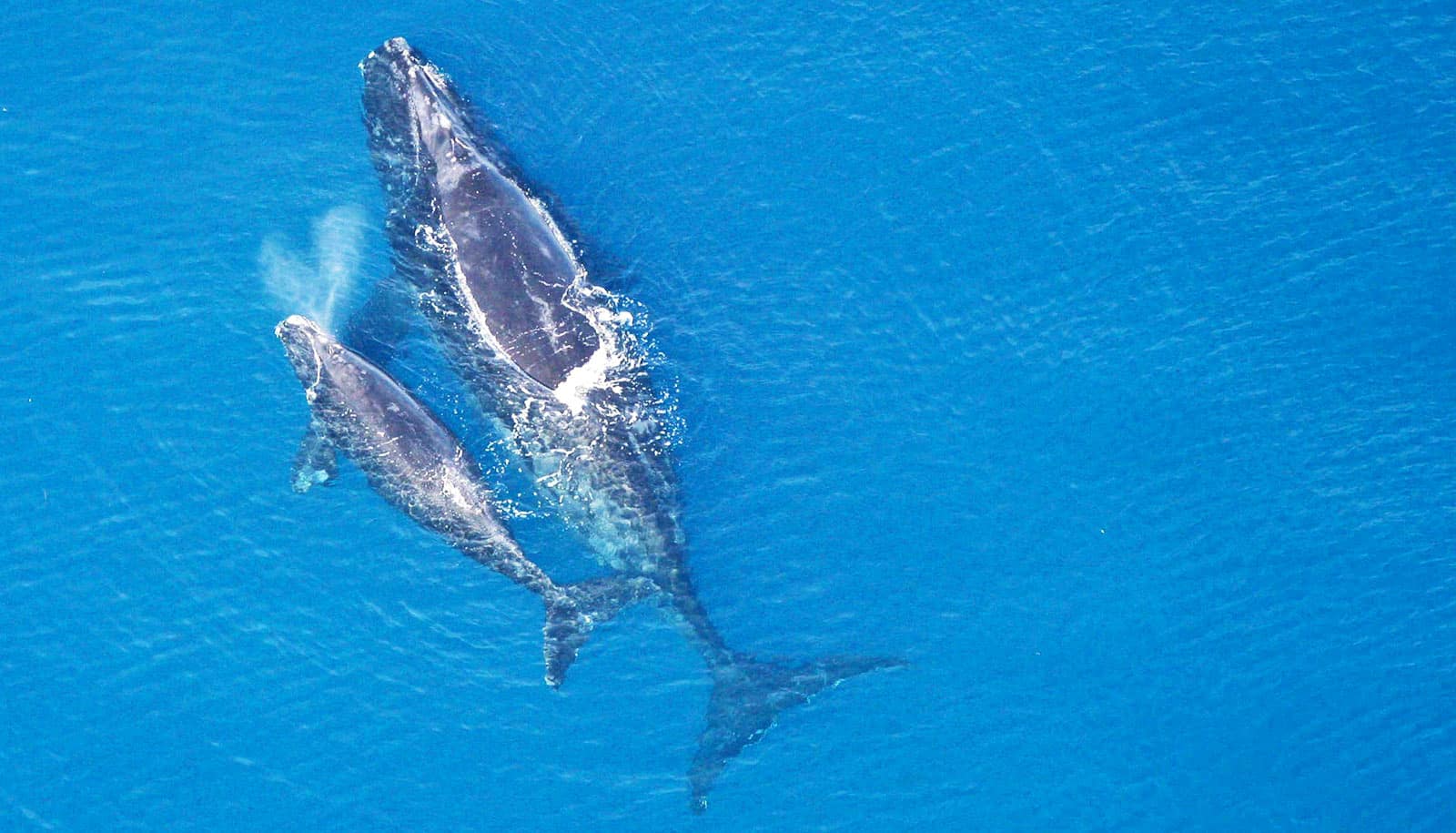An investigation into whale’s diets reveals the surprising effect that their absence—and that of their poop—has had on ocean ecosystems.
From 1910 to 1970, humans killed an estimated 1.5 million baleen whales in the frigid water encircling Antarctica. They were hunted for their blubber, baleen—the filtering fringe they have in place of teeth—and meat. One might assume that from the perspective of krill—the tiny shrimp-like creatures the whales feast on—this would be a boon.
But new research published in Nature suggests the opposite: that the decline of baleen whales in the Southern Ocean has led to a decline of krill.
This paradoxical result is a sign of just how much the precipitous decline of the large marine mammals has negatively affected the health and productivity of ocean ecosystems, the researchers say.
“Fifty years after we stopped hunting whales, we’re still learning what impact that had. The system is not the same,” says Matthew Savoca, a postdoctoral scholar in the Goldbogen lab at Stanford University’s Hopkins Marine Station and lead author of the paper. “We’re looking into ways of using this information to restore ocean ecosystems and bring whales back. And hopefully, that will have benefits for everything from biodiversity conservation to fisheries yield to carbon storage.”
The researchers came to their troubling conclusion after asking a very fundamental question: How much do whales eat?
Whales tags and drones
Large whales are inherently difficult to study because they can’t be studied in captivity. So, previous estimates of how much whales consume were generally limited to either studies of dead whales or metabolic extrapolations based on much smaller animals.
Humans killed an estimated 90% of all the large whales in the Southern Ocean in just over 50 years—less than a blue whale’s lifespan.
For this study, the researchers looked at blue, fin, humpback, and minke whales—all whales that feed by gulping a large amount of water and filtering it through their mouths’ fringed baleen plates until only their prey remains. They employed several high-tech tagging devices that attach to whales typically for about 5 to 20 hours, recording their movements, acceleration, sound, and, if light allows, video.
Drones, operated by the Duke Marine Robotics and Remote Sensing Laboratory, measured the length of individual, tagged whales, which helps the researchers estimate the size of their gulp. In collaboration with the Environmental Research Division at NOAA and the University of California, Santa Cruz, the researchers also ran an underwater device called an echo sounder—which Savoca likens to “a fancy fish finder”—which uses sound waves at several different frequencies to measure how much prey is around.
“All of that put together really gives us this amazing view,” says Shirel Kahane-Rapport, a graduate student in the Goldbogen lab and coauthor of the paper. “From each one, you can learn a lot about whales, but the combination takes the research to another level.”
Analysis of the data they captured reveals that whales in the Southern Ocean eat about twice as much krill as previous estimates suggested, and that krill-feeding blue and humpback whales off the coast of California eat two to three times as much as previously thought. Fish feeding humpback whales, however, might eat the previously estimated amount or even less. This range seems to reflect the energy density of the food—whales need to eat more krill to get the same energy as they would from a smaller amount of fish.
Whale gulps
Humans killed an estimated 90% of all the large whales in the Southern Ocean in just over 50 years—less than a blue whale’s lifespan. Accounts from early in those years describe waters boiling red with krill and whale blows as far as the eye can see. Even now, decades after whaling have stopped and recovery efforts are underway, the coauthors and reviewers of this paper—people who have collectively been to the Antarctic dozens of times over several decades—can’t recall seeing even one blue whale in the Southern Ocean.
“As large baleen whales get bigger, the anatomical machinery that allows them to eat also gets relatively bigger,” says Jeremy Goldbogen, co-director of Hopkins Marine Station and associate professor of biology in the School of Humanities and Sciences, who is senior author of the paper. “They have evolved these systems that allow them to be eating machines. That disproportionately bigger gulp size allows them to take advantage of abundant food, like krill.”
The researchers made their estimates of consumption based on their data about prey density, gulp size, and lunge frequency, as recorded by the tags. Going from hours of data to general estimations—and applying those to whales around the world—required careful calculations.
“We came up with a very involved process and we try to do our best to retain as much uncertainty as possible along the way,” says Max Czapanskiy, a graduate student in the Goldbogen lab and coauthor of the paper. “No one else has data like this. It’s a huge step forward, but at the same time, it’s a hard system to study and there’s still a lot of uncertainty.”
With these new consumption estimates, the researchers calculated that the early 20th-century abundance of krill in the Southern Ocean had to be about five times what it is now in order to feed the pre-whaling whale population. This implies a complex role for whales in their ecosystems where the decline or recovery of their populations is strongly tied to overall ecosystem productivity and functioning.
“Hopefully work like this can really get people to consider the ecosystem-wide repercussions of human activities because we are still continually affecting their environment,” says Kahane-Rapport.
Enormous krill ‘processing plants’
The Southern Ocean is among the most productive ecosystems on Earth, largely due to the abundance of microscopic algae, called phytoplankton. Phytoplankton are a vital food source for krill, small fish, and crustaceans—which are, in turn, consumed by larger animals, including whales, birds, and other fish. But whales also help sustain phytoplankton. Through eating krill and then defecating, whales release iron locked within krill back into the water, making that iron available to phytoplankton, which need it to survive.
“Without phytoplankton, you’re never going to get all the animals and everything that we care so much about,” Czapanskiy says. “When whales were very numerous, they had this incredible role in bolstering the ecosystem.”
“Think of these large whales as mobile krill processing plants,” Savoca adds. “Each fin whale or blue whale is the size of a commercial airliner. So, in the first half of the 20th century, before whaling, there were an additional one million of these 737-sized krill processing plants moving around the Southern Ocean eating, pooping, and fertilizing.”
The many twists and turns of these findings demonstrate the potential impact of asking simple questions. By trying to pin down how much whales eat, this work has cast doubt upon what people thought whales needed to survive, and how the activities of whales and humans affect ocean ecosystems.
“Just this idea that if you remove large whales, there’s actually less productivity and potentially less krill and fish is amazing,” says Goldbogen. “It’s a reminder that these ecosystems are complex, highly intricate, and we need to do more to fully understand them.”
This research had funding from the National Science Foundation; the Office of Naval Research Young Investigator Program; the Defense University Research Instrumentation Program; the National Geographic Society; the Percy Sladen Memorial Trust; the PADI Foundation; the Society for Marine Mammalogy; Torben og Alice Frimodts Fond; the Volgenau Foundation; the International Fund for Animal Welfare; and MAC3 Impact Philanthropies, which is part of the Stanford One Ocean Initiative.
Source: Stanford University


